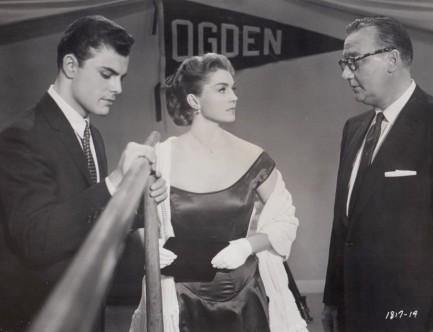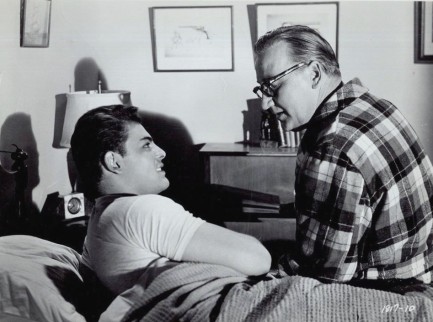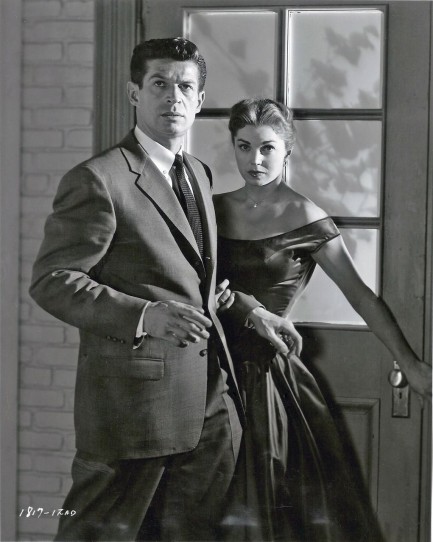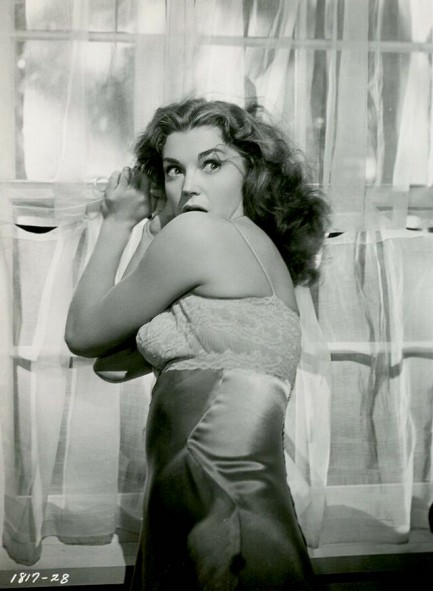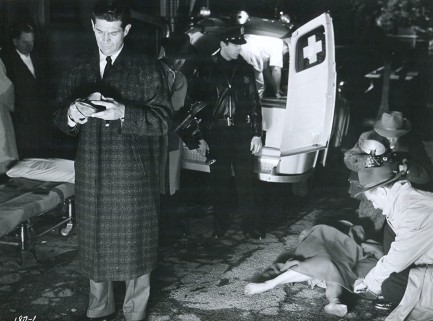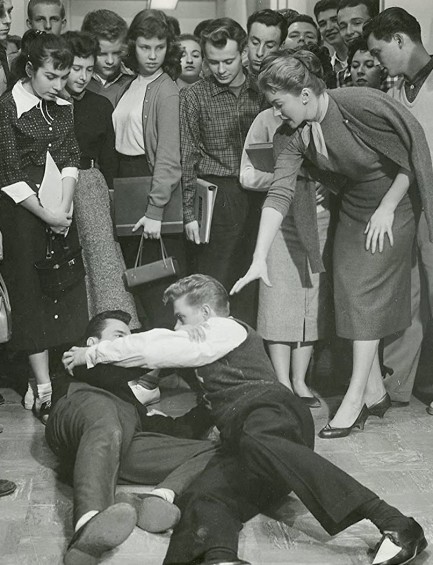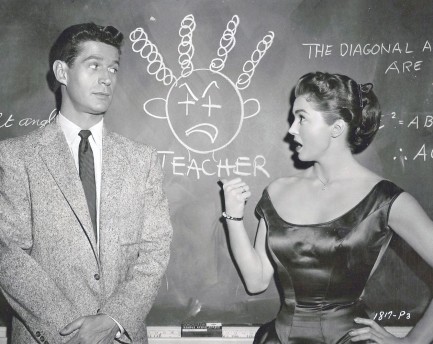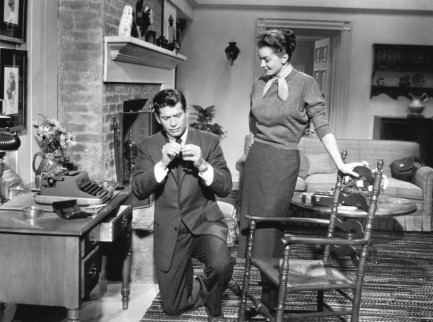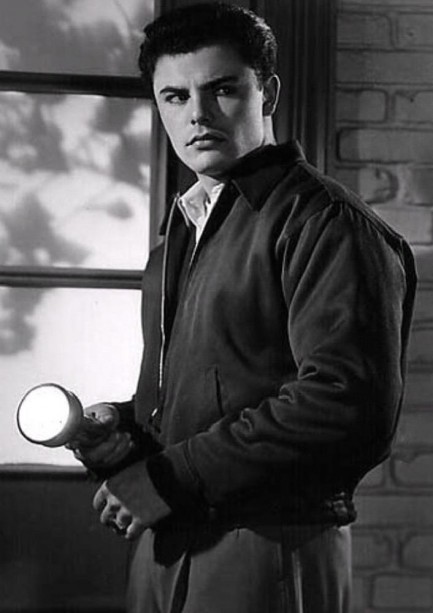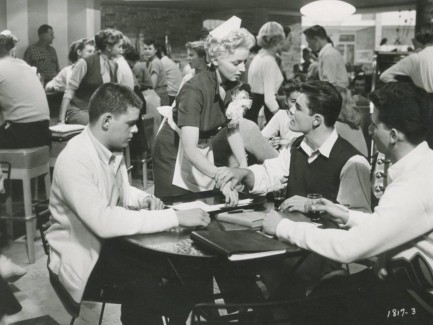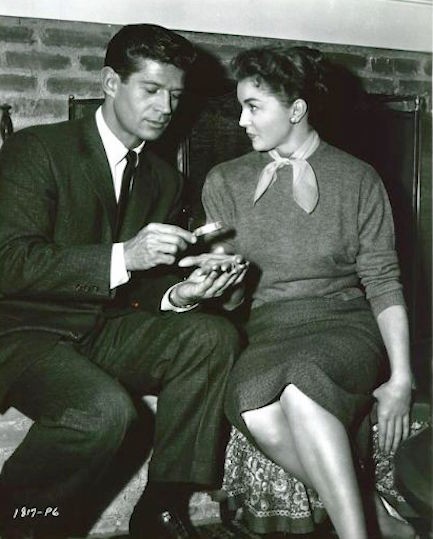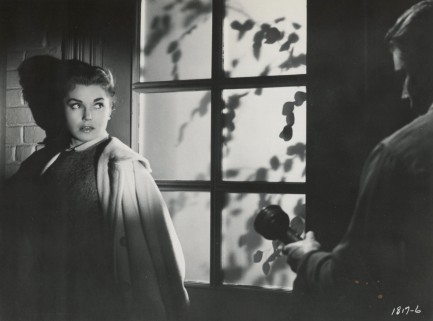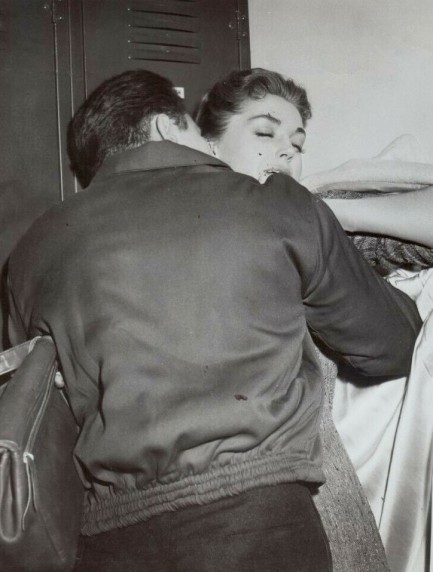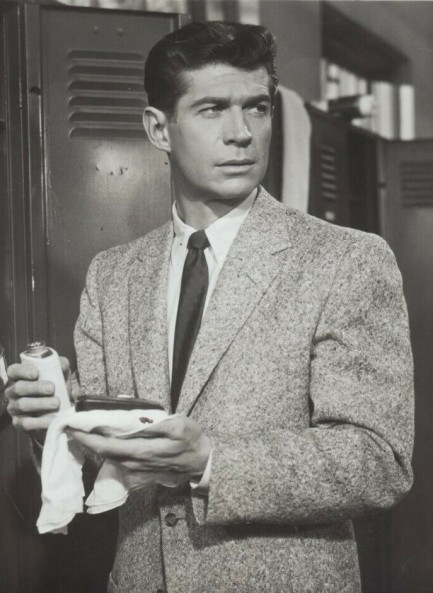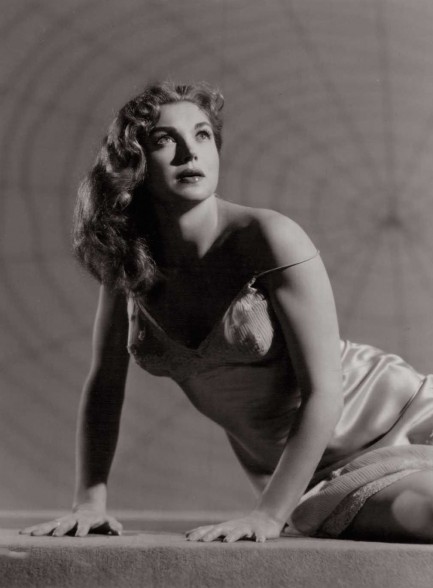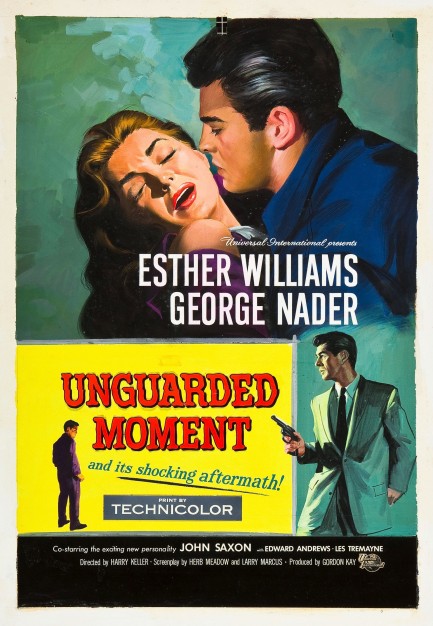| Vintage Pulp | Apr 16 2023 |

Round and round she goes. Where she stops nobody knows.
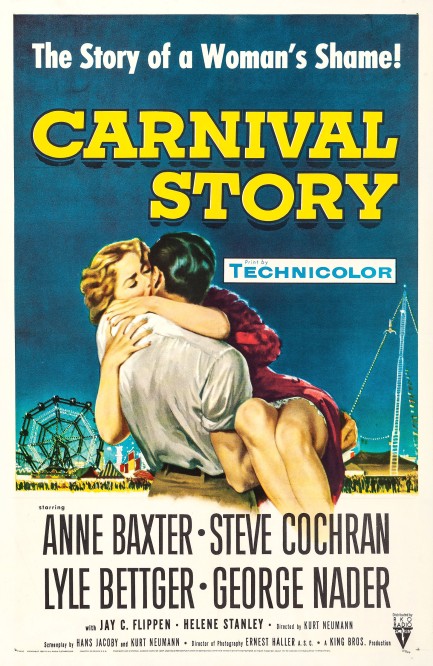
We like books set in carnivals. They've been among our most interesting reads. So we figured a movie set in a carnival—Carnival Story, with Anne Baxter and Steve Cochran—was a natural. We gave it a look and it's an above average drama about how Baxter becomes a high diver in a Munich carnival and makes a big splash, but has relationship issues that threaten to derail her career and life. Her main problem is Cochran. He lies, he cheats, and he steals, but she just can't quit him, even though her diving partner Lyle Bettger is totally devoted to her. Even after she marries Bettger she can't keep her hands off Cochran. This can only end badly. And by badly we mean violence and death.
Carnival Story is one of those movies with an unspoken sexual subtext. Why would Baxter let Cochran mistreat her again and again? Well, because he gives her something no other man can. Though it couldn't be shown onscreen we can understand that something to be sexual passion. Bettger, and later George Nader, are both devoted to Baxter, and they're nice guys besides, but they're square. Cochran gets Baxter's loins all feverish. Portraying a woman trapped in this dilemma during Hollywood's age of censorship takes acting skill, and Baxter, an Academy Award and Golden Globe winner by this point, has plenty of that. Anything she's in is worth a watch. Carnival Story premiered today in 1954.
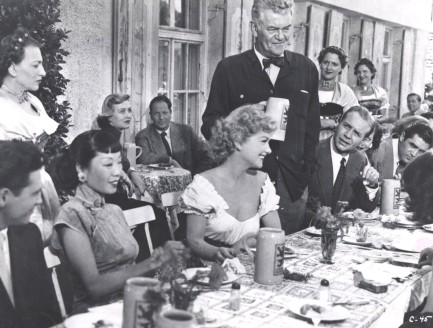
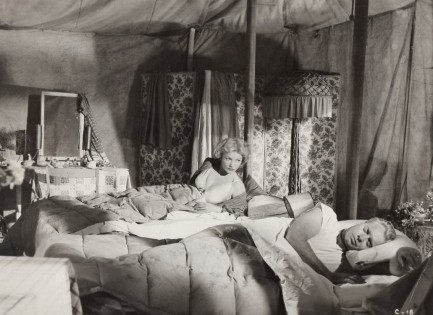
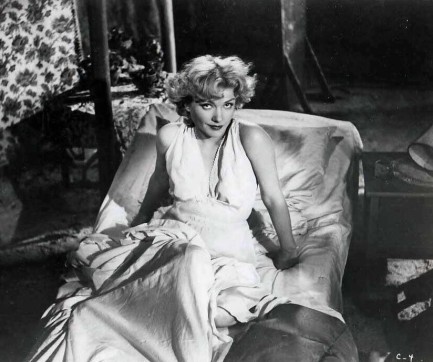
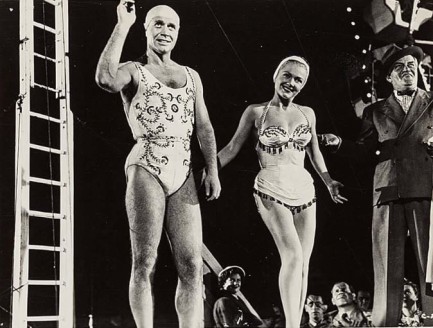
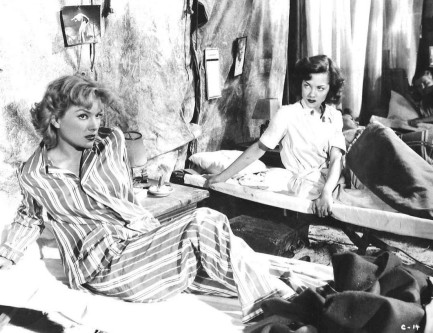
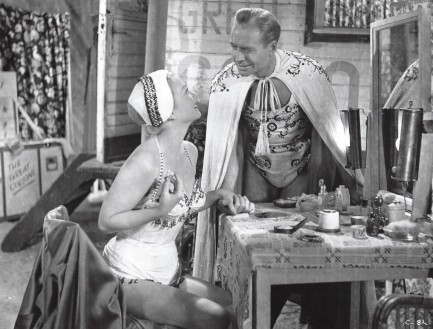
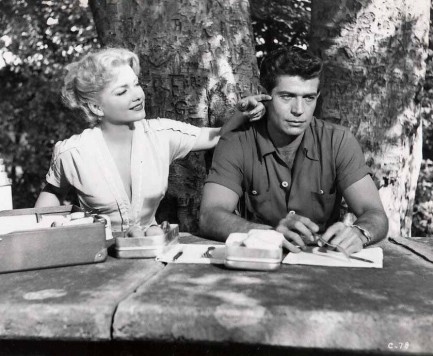
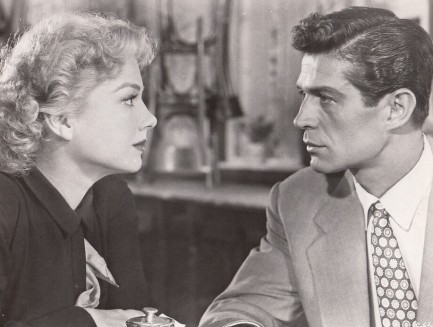
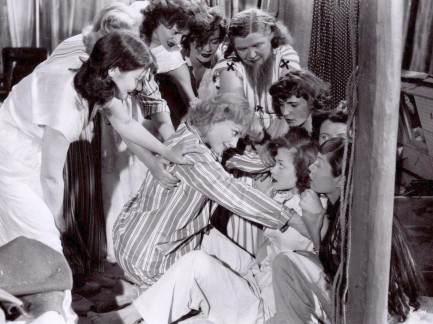
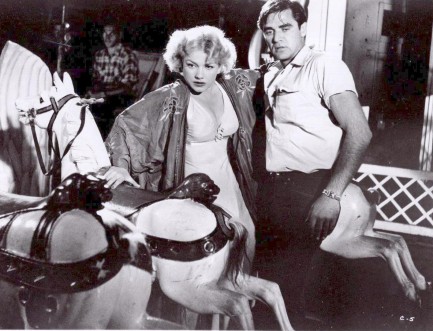
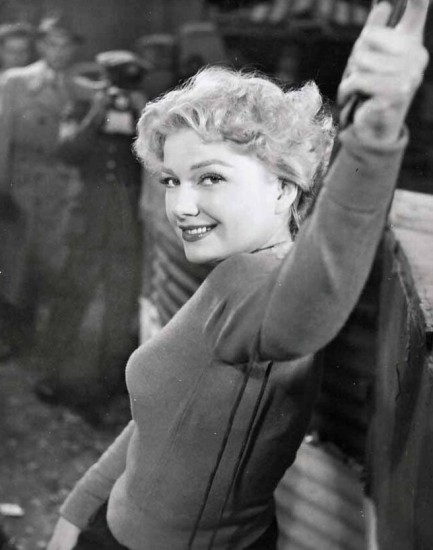
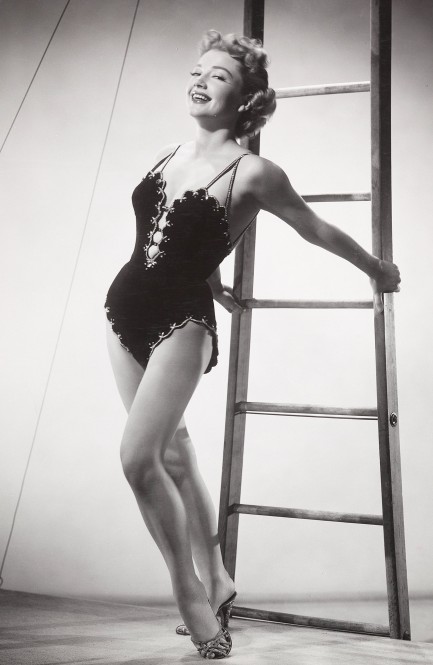
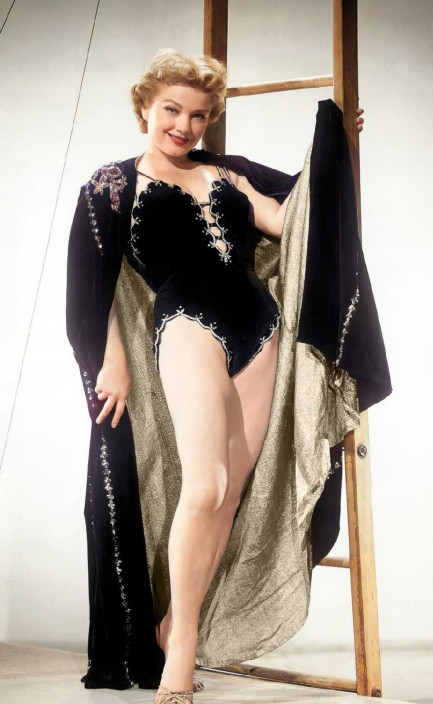













| Vintage Pulp | May 29 2022 |

Up the river and into trouble.
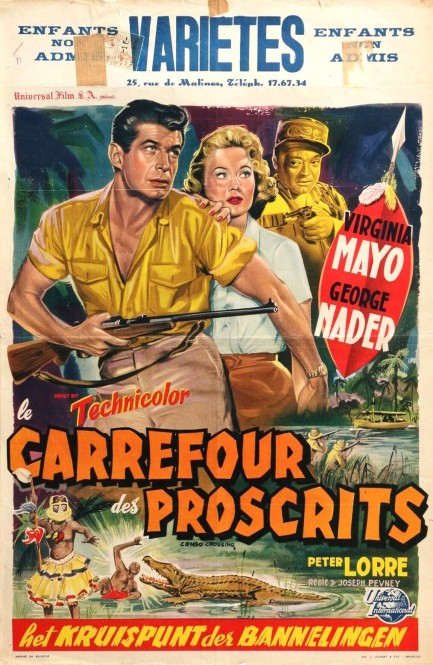
Vintage Belgian movie posters are generally very nice. This one was made for Congo Crossing, which was titled Carrefour des proscrits in French and Het Kruispunt der Bannelingen in Dutch. The movie isn't actually set in the Belgian Congo. Instead it takes place in a fictional west African territory called Kongotanga, where George Nader and Virginia Mayo find themselves snared in an adventure that's part Casablanca and part African Queen. Sounds good, right? You can read what we wrote about the film here. There's no premiere date for Belgium but it probably played there in the spring of 1957.
| Vintage Pulp | Jul 13 2021 |

Bogart shows the way for the makers of Congo Crossing.
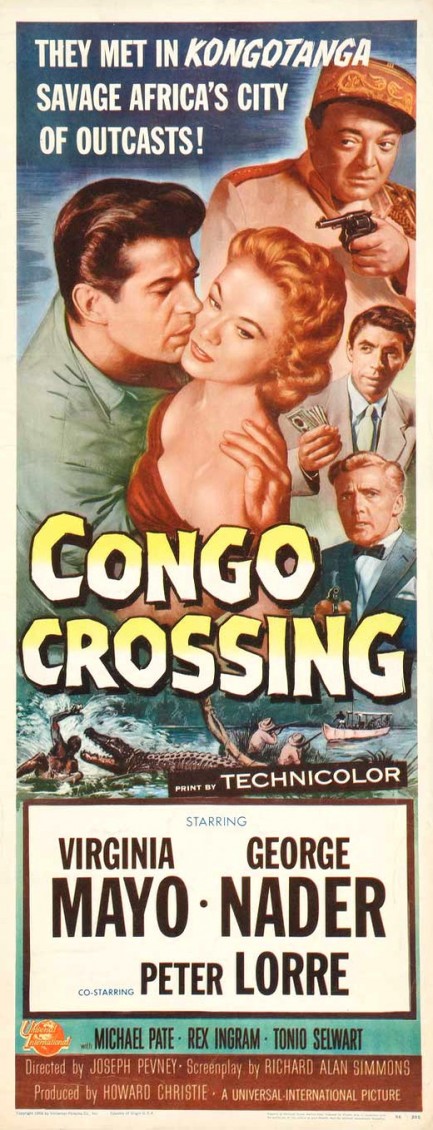
This poster for Congo Crossing has all the elements—firearms, some romantic nuzzling, and a huge crocodile. The trifecta. So we watched it, and what you get here is a Technicolor adventure set in the fictive West African land of Kongotanga, which sits geographically on the border of Belgian Congo, and is a stand-in thematically for Casablanca. Which is to say Congo Crossing uses the basic set-up of Casablanca—transitory expats and shady types in an ass-end outpost riven by local political tensions and power struggles. Virginia Mayo plays a wanted woman fleeing a murder charge she picked up on the French Riviera, George Nader plays the rakish stud who you aren't sure whether to like at first, and in the supporting cast are corrupt local kingpin Tonio Selwart, killer for hire Michael Pate, and Peter Lorre as the local chief of police. Here are some Casablanca similarities:
Expats desperate to catch the next day's plane to anywhere.
A climactic airport shootout.
A woman greatly desired by two men.
Lots of gun toting guys in tropical suits.
A comedic police official whose loyalties shift where the wind blows.
A moment when one man tells a rival it looks like the beginning of a friendship.
Peter Lorre.
Peter Lorre.
We mention Casablanca as shorthand to give you an idea of the set-up, and now we'll mention The African Queen—another Humphrey Bogart classic—as shorthand to tell you what the middle of the movie becomes. Mayo, Nader, and a few others embark on a boat trip upriver to a jungle hospital. There Mayo realizes she's the target of a killer, and flees farther along the river with Nader, dealing with an ambush, a sexual predator, a swarm of terrible tse-tse flies, a sneaky croc, and a deadly illness. You've seen The African Queen, right? A couple of strong similarities there. The group faces these problems and, unlike their African helpers, come away more or less intact, then the movie disembarks from the river—and The African Queen—to shift back to Kongoblanca, er, we mean Kongotanga, where everything began.
So does a movie that starts and ends kind of like Casablanca and has something kind of like The African Queen stitched into the middle work? Not with this script and budget it doesn't. And though the cast is game and experienced, the material doesn't give them much of a chance to sparkle. We can't call the movie bad, but we certainly can't describe it as recommendable either. And going back to the jungle segment for a moment, why is it that in such films the people born and raised in Africa always get eaten while white folks like Mayo and Nader can snog in the bush and be just fine? That's a rhetorical question of course. Congo Crossing premiered today in 1956.
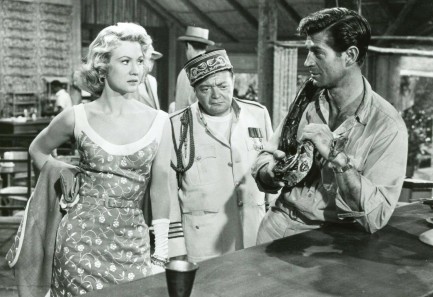
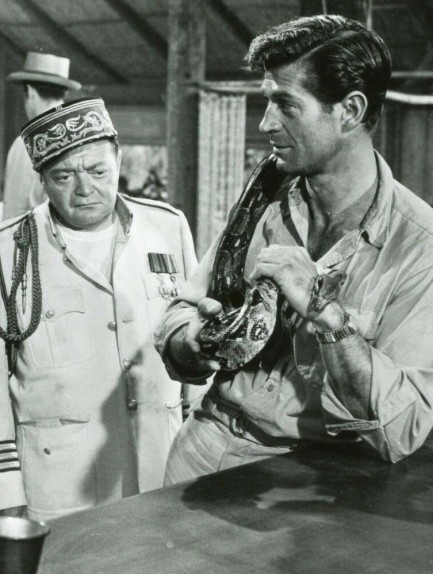
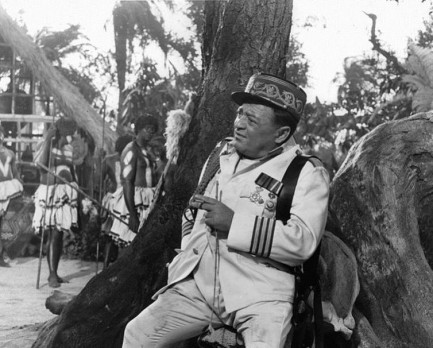
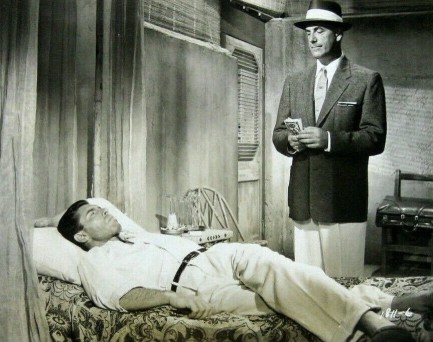
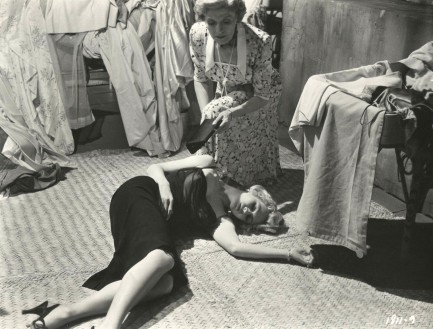
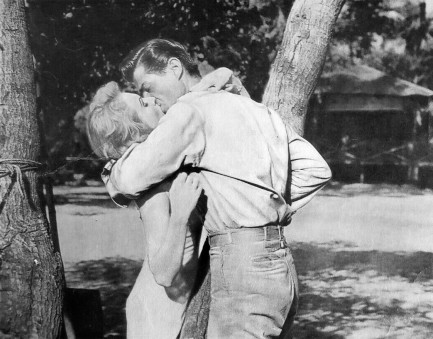
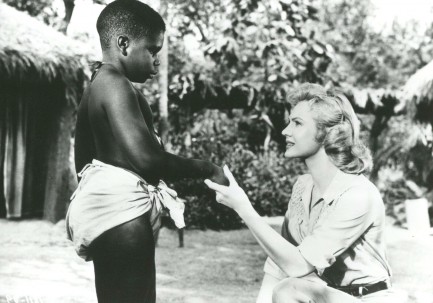
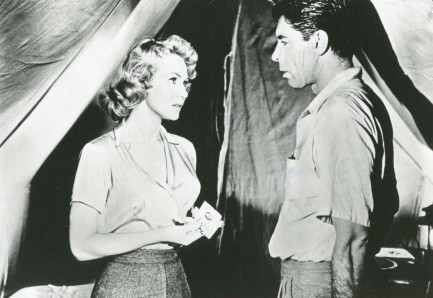
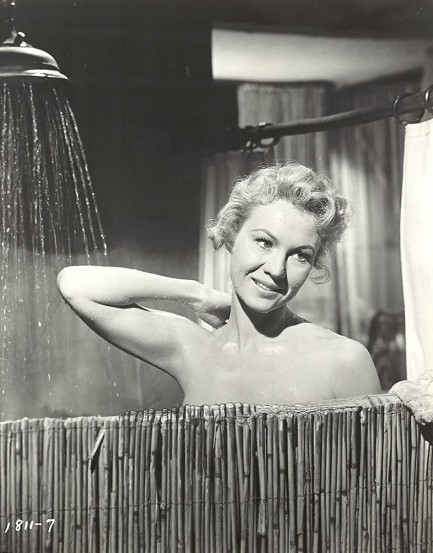
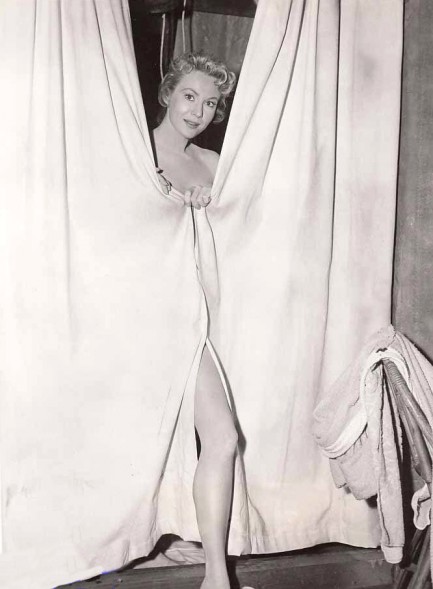
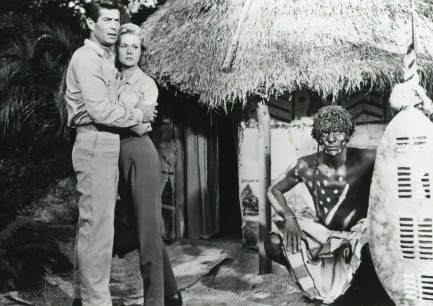
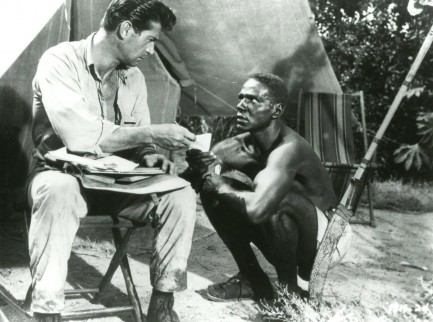
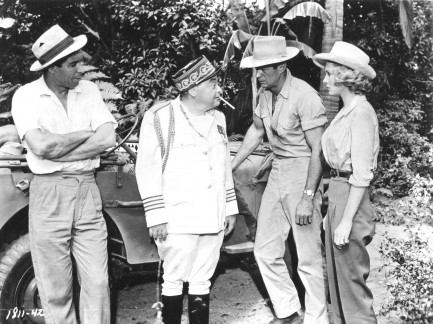
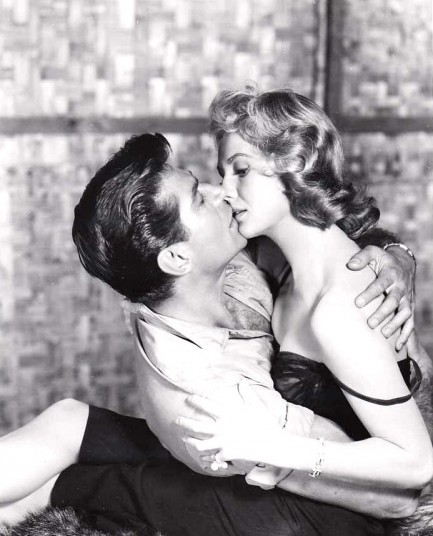
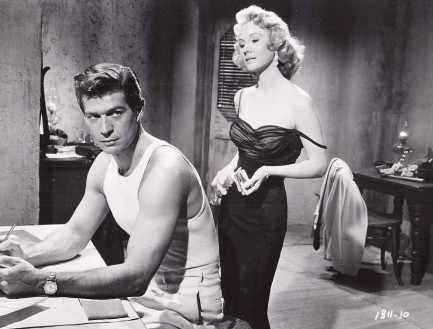

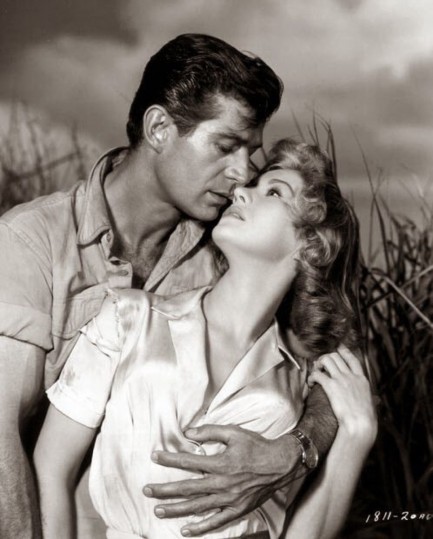
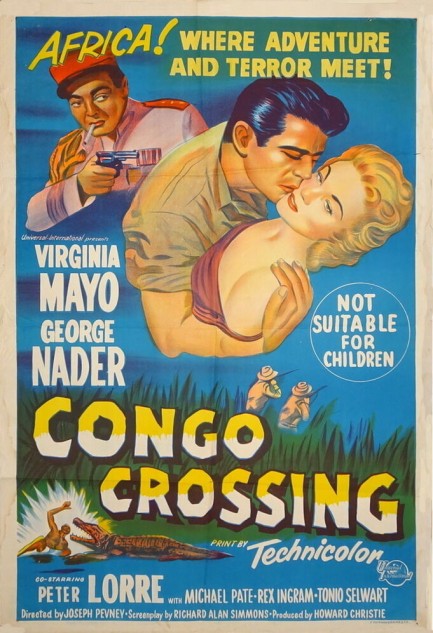


















| Vintage Pulp | Jan 22 2021 |

Competition for mates gets vicious in the Hollywood jungle.
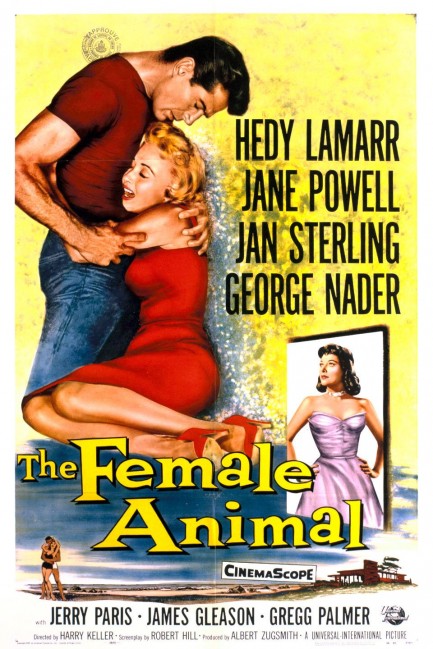
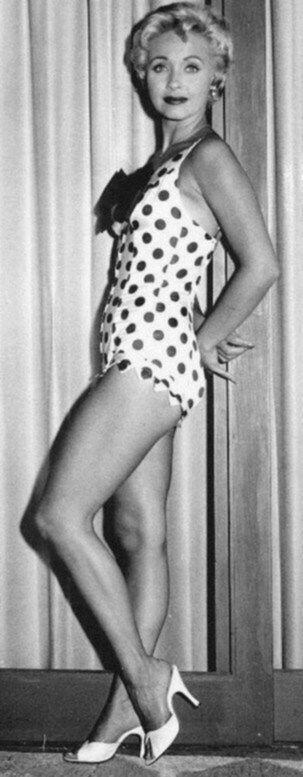 This poster really catches the eye. It was made for The Female Animal, Hedy Lamarr's last motion picture, filmed when she was forty-four. It's the story of an aging star who finds herself a younger man, but watches him immediately become the target of her sexpot daughter.
This poster really catches the eye. It was made for The Female Animal, Hedy Lamarr's last motion picture, filmed when she was forty-four. It's the story of an aging star who finds herself a younger man, but watches him immediately become the target of her sexpot daughter.The age issues strain credulity a bit. The younger man is played by George Nader, who's only seven years Lamarr's junior, while twenty-nine year old Jane Powell plays Lamarr's adopted daughter. But okay, they were the ones cast, so we have to go with it. And really, who's going to complain? Nader is a muscular uberhunk who'd fill out a Marvel superhero costume no problem, and Powell is dangerously cute straining the seams of a form fitting swimsuit.
And incidentally, speaking of casting weirdness, Powell—yeah, that's her in the polka dots—had three children of her own by the time she played this troublesome stepdaughter role. Yes, three. There's no substitute for lucky genes, an adage doubly proved by the fact that Powell is still kicking around today at age 90.
Moving on to the performances, Lamarr does fine in a sort of detached way, and Nader is solid enough, but it's Powell who's asked to spark the movie as the daughter determined to steal her mom's man. She's required at turns to be blind drunk, violently angry, coquettish, sexually predatory, and disconsolate. She mostly hauls that heavy load, but in the end the movie is still pretty lightweight. Probably part of the problem is the scripting by Robert Hill. Some of his other screenplays include Sex Kittens Go to College and The Private Lives of Adam and Eve, so his insights into the female animal are negligible. You may want to seek your own, though frankly, we personally have never figured them out and have abandoned any expectations that we ever will. To be fair, they probably feel the same way about us. The Female Animal premiered in New York City today in 1958.
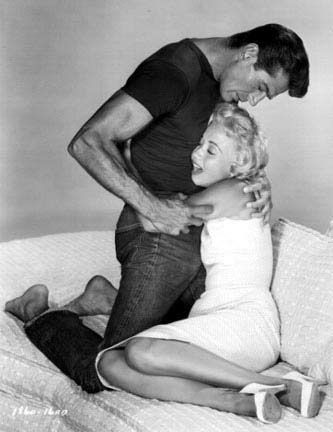
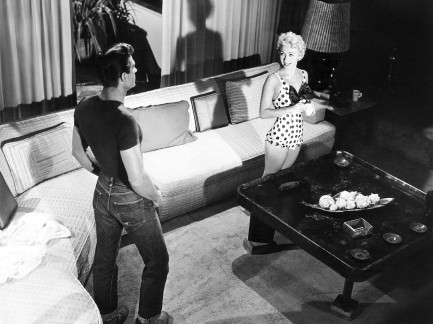
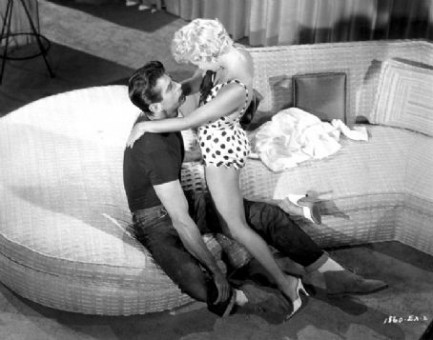
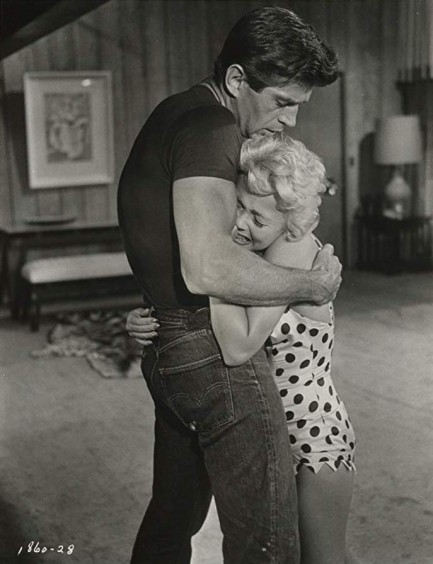
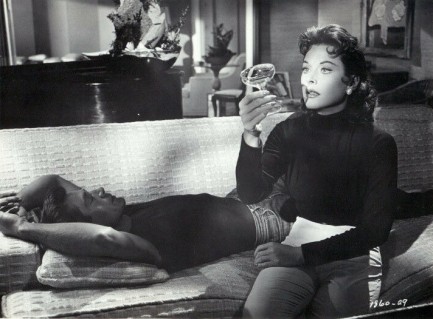
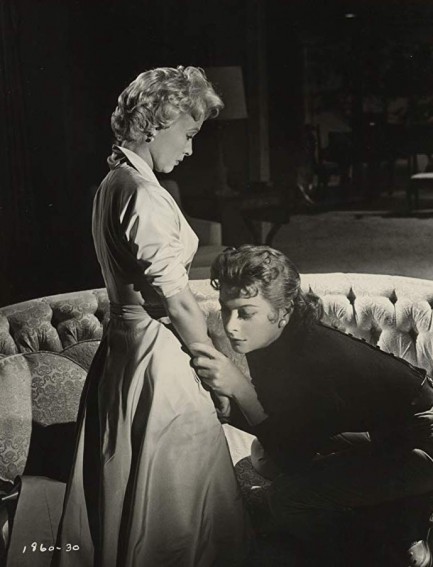
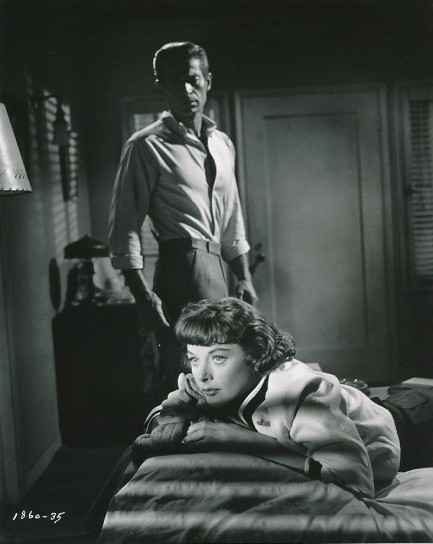
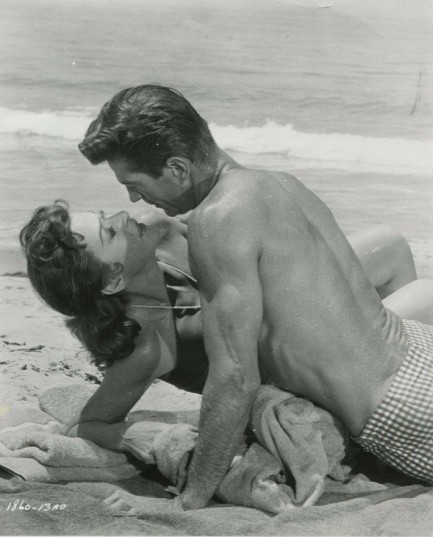
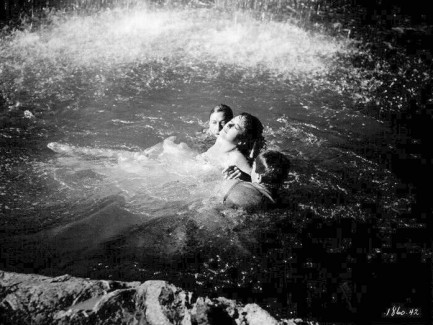
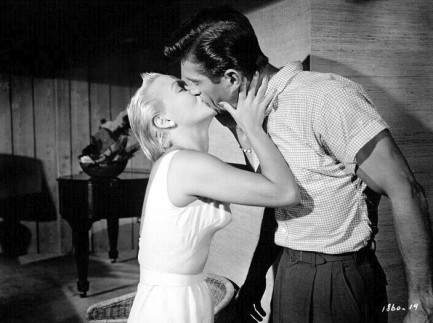
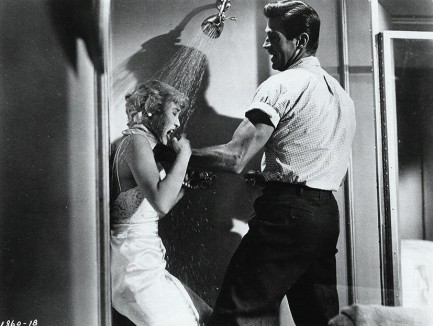
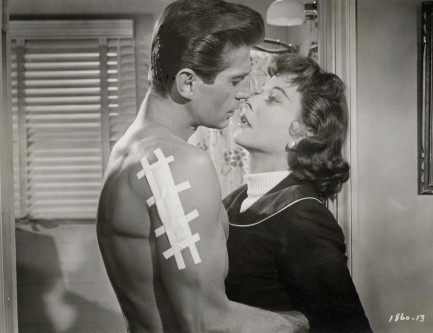
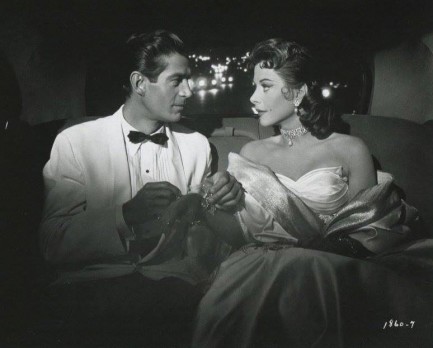
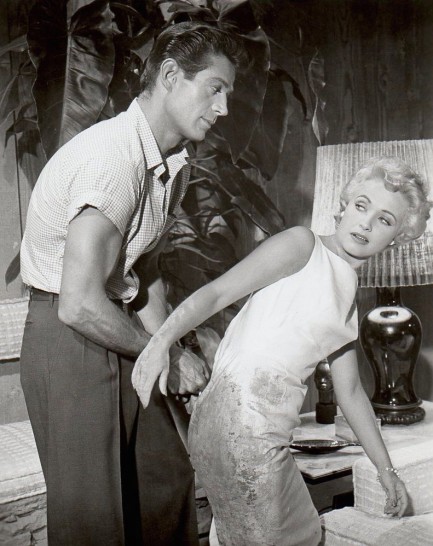
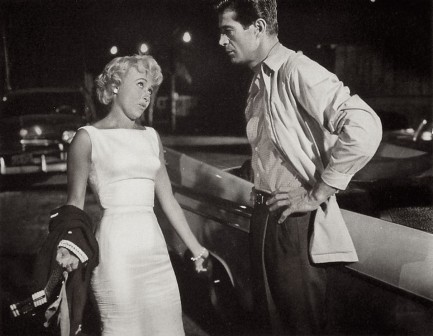
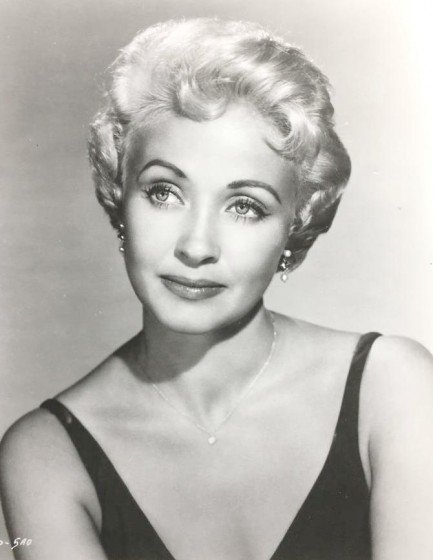
| Vintage Pulp | Dec 27 2020 |

Esther Williams learns that privileged pretty boys can get very ugly.
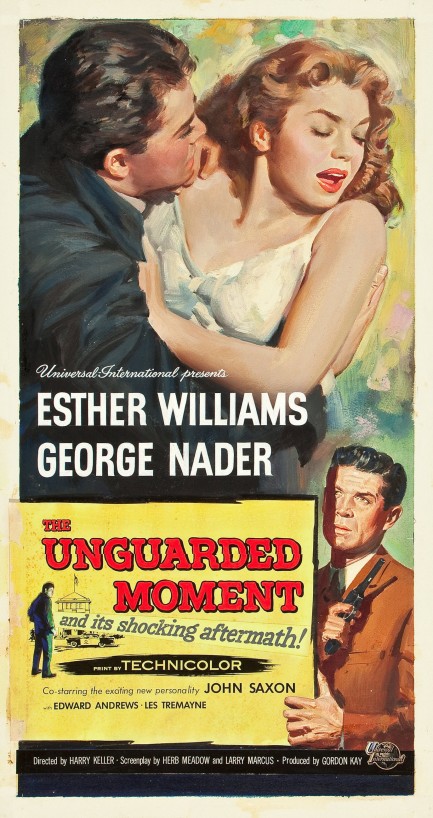
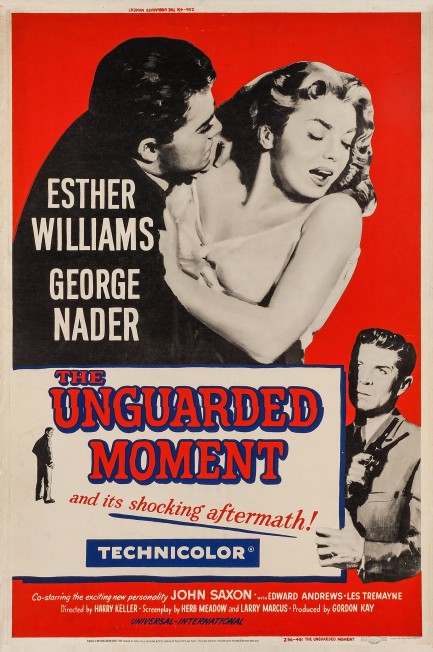
The Unguarded Moment is one of those films that, although it's basically a lifetime old, is amazingly topical in 2020. The subtext of this mystery concerns whether a person is redeemable, whether they deserve forgiveness for their errors. When a high school football star stalks his beautiful thirty-five year old teacher, sends her provocative notes, breaks into her house, and even physically accosts her, the script positions him as someone who can be redeemed. He's just frustrated, confused, and acting out behavior taught to him by his terrible father. You know the sentiment by heart, because it still pervades today (though not for the non-white or non-privileged): “He has his whole life ahead of him and it's a shame to ruin it over one youthful mistake.”
Surprisingly, Esther Williams herself becomes this wayward soul's main advocate, despite the peril and fear she's endured. It's a noble turn for her character to take—and an unlikely one. Barring interruptions, Williams would have been raped. That's not our opinion. The script leaves no real doubt. The plot contrivance of giving this almost-rapist a break didn't sit well with us, but leaving that aside, it's interesting to watch Williams negotiate this role. It was a leap for the former Olympic swimmer and longtime musical star. The idea was to nix the singing and water ballet and get her into meatier roles, and sure enough, the only singing and dancing she does here is singing the praises of her attacker and dancing around her duty to assist the law.
The film wasn't well received by the public, though we aren't sure if the reticence had to do with performance, casting, subject matter, or something less tangible (a feeling of overall creepiness, perhaps). Even so, we think it's pretty well made, and Williams as an angel of mercy is worth watching, if only for the discussion her role might engender. Our girlfriends didn't like it at all. But for our part, we'll watch just about anything that has brand name stars in it, and Esther Williams, around this period, was about about big as they came. Watch and debate. After a special in premiere in Los Angeles, The Unguarded Moment began its nationwide run today in 1956.
